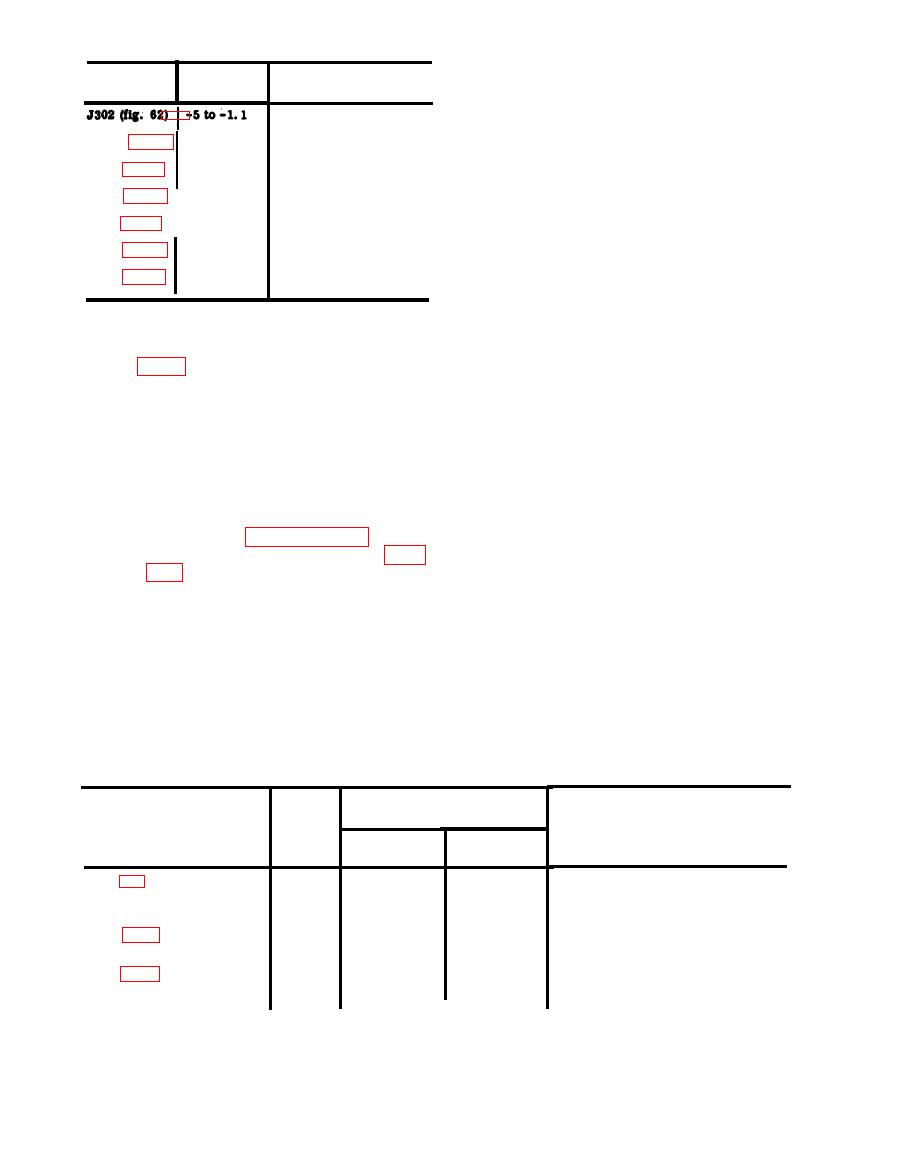 |
|||
|
|
|||
|
|
|||
| ||||||||||
|
|  to the frequency indicated in the
Voltage
Test
point
Check
chart. To perform the sensitivity
(volts dc)
checks at the ANT. jack, connect
V301 or associated cir-
the TS-497/URR to the ANT. jack
cuit components.
V302 or associated circuit
through the 6-db pad supplied with
J104 (fig. 74) -0.6 to -2.6
components.
the TS-497/URR.
V201 or associated cir-
J201 (fig. 53) -0.9 to -1.4
(5) Modulate the input frequency 30
cuit components.
I
V101, V102, or associa-
percent at 1,000 cps and adjust the
J105 (fig. 68) 0 to -0.38
ted circuit components.
input level to the maximum input
I -4 to -7
J106 (fig. 68) -0.23 to -1.2
V103 or associated cir-
microvolt setting listed in the
cuit components.
chart.
J114 (fig. 68)
V104 or associated cir-
cuit components.
(6) Note the rt unit audio output level
V105 or associated cir-
J111 (fig. 72) -22 to -40
(in db) as indicated on the ME-30B/
cuit components.
U, and note the AN/URM-25D or
TS-497/URR output in microvolt.
(7) Remove the 1,000 -cps, 30-percent
modulation from the signal gener-
ator output frequency and note the
a. Perform the sensitivity checks as
decrease in rt unit audio output
level (in db). The decrease must be
follows:
at least 10 db.
(1) Set up the rt unit for normal re-
b. The following chart indicates the nor-
ceive (SQUELCH control at OFF)
mal ranges of signal generator output volt-
on 399.9 mc. Do not change the
age required to obtain a 10-db signal plus
frequency setting during the sensi-
noise-to-noise ratio at each test point. The
tivity checks.
input voltage required at each test jack
(2) Check for proper input voltage as
will vary slightly with each unit. Because
described in paragraph 100.
of the difference in power supplies, sep-
(3) Connect the audio test box (para
arate ranges are listed for the RT-441/
TRC-68 and the RT-323/VRC-24. The in-
jack and connect Electronic Volt-
put microvolt ranges listed were deter-
meter ME - 30B/U, Oscilloscope
AN/USM-50, and a 600-ohm load
mined by measurements made on typical
receiver-transmitter units. When abnor-
between the SPEAKER and AF
OUTPUT RETURN terminals of the
mally high or low input voltages are
audio test box.
required to obtain a 10-db signal plus
(4) Connect the AN/URM-25D to the
noise-to-noise ratio, perform the isolating
test jack indicated in the chart
procedure indicated in the chart to locate
below. Adjust the signal generator
the cause of trouble.
Input microvolts
Test point
Frequency
Isolating
procedure
(mc)
RT-441/TRC-68
RT-323/VRC-24
10,000-18,000 Check V503 and V504 and make
0.5
10,000-32,000
voltage-resistance checks in these
stages, or check detector and noise
limiter circuits to isolate trouble.
10-30
Check V501 and V502, and make voltage
0.5
J503 (fig. 59)
10-55
resistance measurements to isolate
trouble.
J402 (fig. 56)
35-60
Check 500-kc filter. Check V401 and
0,5
35-80
make voltage-resistance measurement
to isolate trouble.
|
|
Privacy Statement - Press Release - Copyright Information. - Contact Us |